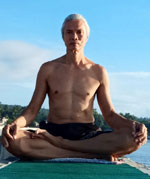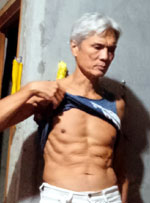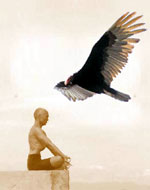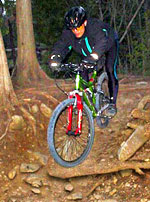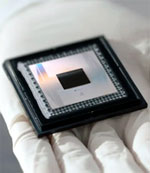

Youth, Aging & Longevity
Youth, Aging & Longevity
Staying Forever Young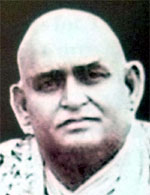 January 10, 2025
January 10, 2025
Kaya Kalpa (Rejuvenation Practice)
Podcast Mention
I was listening to a podcast guesting Dr. Chiti Parikh who mentioned stumbling upon a book about a 185 year old saddhu, Tapaswiji Majaraj, who reversed his aging through a practice called Kaya Kalpa. It got my attention. I researched about Kaya Kalpa to see how I can integrate this into my Siddhi Activation practice.
What is Kaya Kalpa?
Translated "transformation of the body", Kaya Kalpa is an alchemical process involving diet, yoga asanas, pranayama, oil rubs, herbal baths and ingestion of metallic/mineral calcinated ashes to rejuvenate the body back into youthful virility and extend longevity for the purpose of living long enough to experience being a jivamukti (a realized being who is still alive). It saves much time to have one long continuous life until liberation is attained rather than be interrupted with several deaths and rebirth - thus, in its genesis, Kaya Kalpa was the domain of old and spiritual adepts (unlike now where new-age vacationers go to India for a Kaya Kalpa spa indulgence). Kaya Kalpa had many definitions and forms of practice depending on which guru you ask, but the core practice seems common.
Kaya Kalpa is very similar to the Rasayana (rejuvenation treatment) practiced in Ayurveda. In some circles, they are referred to interchangeably.
I have sourced a few PDFs on this subject and I'll synthesize them here.
History
History says that back in the ancient time, an old man was to marry a young princess. Desperate, he seeked his guru who subjected him to a regiment of special diet, breathing exercise, herbal baths, oil application for 90 days. After that period, the old man was said to have looked like a dashing prince. The gray hair was now black, he grew new teeth, his old skin peeled away and his wrinkles were all gone. This process was called Kaya Kalpa. There are numerous anecdotes about the miraculous effects of Kaya Kalpa and growing new teeth seems to be a constant (growing new teeth is what I had been working on for the last many years through Siddhi activation).
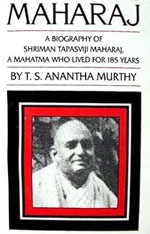 Tapaswiji Majaraj (1770-1955)
Tapaswiji Majaraj (1770-1955)
Perhaps the most famous story for Kaya Kalpa is Tapaswiji Maharaj's. A book was written about him by T. S. Anantha Murthy, Maharaj: A Biography of Shriman Tapasviji Maharaj, a Mahatma Who Lived for 185 Years. It has been out of print for long while now. The story goes that Tapaswiji was a Sikh prince in a kingdom in north India. In a tragedy, he lost all his immediate family. Distraught, he gave up the kingdom, met a guru, learned yoga and lived the extreme life of a renunciate - lived in a cave, held long postures, stood for 24 years, and meditated by a freezing lake with just a loin cloth. At age 100, his body was wrecked and he prepared to die. But he met a yogi who shared the secrets of Kaya Kalpa. After 90 days of immersion in the practice, Tapaswiji looked like 30 years old, had new teeth, black hair, and a supple skin and strong body. In his lifetime, he performed Kaya Kalpa 3X. It is said that the physical rejuvenation is more from the extended seclusion and 'drugs' of the Kuti Pradeshika. The lesser method of Vita Tapika does not use these. At age 185, he willed to die already. After chanting OM, he passed on.
Rasayana (Rejuvenation Therapy, aka Jara Chikitsa)
Rasayana is one of the 8 main branches of Ayurveda medicine, focused primarily on rejuvenation for older men. References would be Ashtanga Kridaya and Charaka Samhita. Purva and Pancha Karma (detox) should be done first before Rasayana.
2 Types of Kaya Kalpa
- Kuti Praveshika - this is the hardcore version that includes extended seclusion, spiritual rites and 'drugs'. The protocol is to stay in a specially designed hut for a year (other books say 90 days) and consume an herbal recipe containing Amalaki. This brings about physical rejuvenation and longevity.
How hardcore? One must live in a dark cell alone (no social interaction) for 90 days or 1 year, survive on black cow's milk, not shave, and not touch cold water.
An interesting Rasayana recipe is Somalata Kalpa where the patient becomes unconscious for days. His skin peels off and transforms into a young man when he comes out of it. In Rasayana, old age is not a natural phenomenon but a disease that can be treated using sulphur, mercury, nux vomica seeds, Neem, Haritaki, and Amalaki. - Vata Tapika - this is the milder version for the modern householder, with more focus on rest, herbs, oil and yoga for emotional, mental and spiritual wellbeing (not so much physical age regression). No seclusion, no drugs.
2 Approaches to Kaya Kalpa
- Medicines - the following herbs play prominent roles: Ginger (Zinziber Officinalis), Kattukai (Terminalia Chebula), Amukkura (Withania somnifera), Keelanelli (Phyllathus Niruri), Date Palm ( Phoenix Dactilyfera), Seran Kottai (Semicarpus Anacardium), Vembu (Azadiracta Indica), Tulsi (Ocimum Sanctum), Lemon (Citrus Media Varacida) and Vilvam (Aegle Marmelos). Some require processing with inorganic compounds - metal, iron, mercury, gold, sulphur. Truly, this is alchemical...a throwback to the alchemy epoch.
- Yoga - this portion borrows entirely from the 8 limbs of yoga.
Siddha Medicine and the Siddhars
Siddha medicine (the root of the Siddha, one who has perfected Siddhis) has long been a therapeutic tradition in Tamil-speaking parts of India. It was later claimed that evolved Siddhars developed the Siddhis (superhuman power). Siddha (the medicine, not the Siddhi adept) has close associations with Ayurveda. The Siddha system aims to immortalize the body and keep it impervious to illness - but this requires a daily regiment of strict diet and supplements. Siddhars (practitioners of Siddha medicine who were disciples of the sage Agasthya) are the ancient progenitors of Kaya Kalpa and Siddha medicine. They are renowned for their mastery of the physical realm, their spiritual attainment and devotion to their practice. There are 18 wellknown Siddhars who lived animated lives.
The 18 Siddhars of Agasthya
- Boganthar / Bhogar - he lived for thousands of years mostly with his guru acquiring advanced knowledge. His guru Kalangi Nathar, taught him the secrets of Siddha medicine and the preparation of the Kaya Kalpa concoction made with 35 ingredients. After taking it, he described his experience as living for 12,000 years in a fabled land sustaining himself with the vital ojas (sublimated spiritual energy). He then received his new name, Bhogar. His body developed a golden color. He is said to have met and became the guru of Babaji Nagaraj (of the Kriya Yoga lineage). He went to China and transfigured himself as Bo-Tang and influenced the Taoist arts. He later on emerged as Lao Tzu and wrote the Tao de Ching. He then returned to India to attain Swarupa Samadhi (golden body).
- Karuvurar - a disciple of Bogar, Karuvurar is known for his contributions to temple architecture and sculpture, particularly in the construction of the Tanjore Brihadeeswara Temple.
- Patanjali - yes, the same Patanjali of Yoga Sutras
- Vanmikar (Valmiki) - the author of Ramayana
- Machamuni (Matsyendranath) - the progenitor of the Nath Yogi tradition from which the Hatha Yoga Pradipika was based on
- Thirumoolar - a celebrated yogi and scholar, Thirumoolar authored the Thirumandiram, a seminal work comprising over 3,000 verses on yoga, tantra, and Saiva philosophy.
- Paambaatti Siddhar - known for his deep connection with snakes, Paambaatti Siddhar used snake metaphors in his teachings to convey profound spiritual truths.
- Theraiyar - a prominent Siddhar physician, Theraiyar authored several medical texts and is known for his expertise in diagnosing diseases through pulse examination.
- Idaikadar - known for his expertise in astrology and agriculture, Idaikadar is famed for predicting climatic conditions and advising farmers accordingly.
- Dhanvantari - revered as the god of medicine in Hindu tradition, Dhanvantari is considered a Siddhar who imparted the knowledge of Ayurveda and Siddha medicine.
- Ramadevar - also known as Yacob Siddhar, he is noted for his contributions to alchemy and medicine, and is believed to have attained the ability to transmute base metals into gold.
- Agathiyar (Agastya) - often regarded as the father of Tamil literature and Siddha medicine, Agathiyar is credited with authoring numerous texts on medicine, alchemy, and spirituality. He is also known for compiling the first Tamil grammar, Agathiyam.
- Konganar - known for his expertise in alchemy and medicine, Konganar was a disciple of Agathiyar and made significant contributions to the Siddha system.
- Sattaimuni - a disciple of Agathiyar, Sattaimuni is known for his works on medicine and alchemy, contributing to the development of Siddha literature.
- Kagapujandar - known for his mastery over time and space, Kagapujandar is believed to have lived through several epochs, imparting wisdom across ages.
- Nandi Devar - a direct disciple of Lord Shiva, Nandi Devar is revered for his profound knowledge in yoga and metaphysics, and is believed to have initiated several other Siddhars.
- Kuthambai - known for his philosophical songs, Kuthambai Siddhar emphasized the impermanence of life and the importance of seeking spiritual liberation.
- Pambatti - renowned for his deep knowledge of snake venom and its antidotes, Pambatti Siddhar is also known for his hymns that convey spiritual wisdom through simple metaphors.
Indian Alchemy/ Rasayana /Rasa Shastra
The Siddhar adepts spent generations perfecting the art of transforming metals and minerals into medicine fit for human consumption to extend life and rejuvenate the body. This art is called Iatro Chemistry or Rasa Shastra - if the conversion was base metals to gold, then it's called alchemy. It is said that Siddha medicine was the genesis of what later was popularized in Europe as alchemy (converting base metals into gold). These metals are processed to produce calcinated ashes - they are considered the mystic side of Ayurveda. The argument for metals and minerals is that they don't lose their potency over time, unlike vegetable-based concoctions. Some families continue the tradition of making mercury and arsenic compounds for Siddha medicine - they keep this a tightly held secret.
Merging of Kaya Kalpa and Rasayana Therapies
Kaya Kalpa originated with the Siddhars in their quest for immortality to achieve Jivamukti in their current lifetime. They also developed the magic salts, metallic medicine, herbal concoctions, and yogic techniques essential for Kaya Kalpa. Yoga and herbal medicines were also first used in Ayurveda's Rasayana. Over time, Rasayana and Kaya Kalpa overlapped and were used interchangeably. One such was Swami Sivananda who even authored a book, Kaya Kalpa. He described Ayurveda as having solved the riddle of old age through the rejuvenating process of Kaya Kalpa. Sivananda, (contrary earlier Kaya Kalpa texts saying it should be done during very old age), says Kaya Kalpa should be done while young.
Chyavana and Mandavya Rishi together with other old sages whose bodies were ravaged by time became young again through Kaya Kalpa. Kaya Kalpa not only rejuvenates but also restores the body to optimized functionality and cures diseases. Kaya Kalpa must be done under the guidance of an Ayurveda doctor (Finding that teacher in the Philippines is next to impossible. As usual, I'll try to learn as much as I can and see how far I can self-administer this). The body is full of toxins and must be purified by Pancha Karma before doing Kaya Kalpa (some texts suggest that the 6 purification processes of Shatkriya will suffice).
3 Processes of Rasayana
- Rasaraj - this is the only component for youth and immortality by using mercury - this metal seems highly regarded in Kaya Kalpa.
- Herbs - can consist of Soma (the recipe has long been lost), Nila, Nari, Padma, Hareetaki and Amalaki. They also contribute to longevity.
- Aachara - longevity through Yama and Niyama, the first 2 limbs of Ashtanga Yoga (I have been practicing Yama and Niyama for years now. They will integrate you nicely into society and make you feel good about yourself, but causing longevity? It seems like a stretch...or I'm missing something).
Soma
Soma is either a plant elixir or from a group of plants, whose recipe has long been lost. No one knows what it is made with, but Soma is mentioned many times in classic Kaya Kalpa texts.
Modern Kaya Kalpa Therapies
The modern version of Kaya Kalpa is Vita Tapika, although the ancient version, Kuti Praveshika (kuti seclusion, metal/mineral medicines, secret herbal medicines) is still secretly practiced in India. Below are 2 popular offerings of Kaya Kalpa in the US:
Drs. Light and Bryan Miller
Light and Bryan Miller studied in Mumbai, India under Dr. Pancha Bai Chotay, who was the attending physician of Mahatma Gandhi during his fasts. He was already 117 and was still practicing Kaya Kalpa.
Treatment
(Pancha Karma must be done prior, must have background in breathwork already and already on the path of spirituality)
(Since I have no access to the real Kaya Kalpa treatment, I will have to resort to vivid imagery based on the Holographic Universe model to emulate the following process and the results) An herbal paste was massaged on the body during a pranayama session. The herbal massage flushed out toxins, rejuvenated the skin and moved stuck emotions. The paste is left to dry up on the skin. This was following by skin brushing to stimulate and clean the skin. Then a different herbal oil is used for the 3rd massage to nourish and seal the skin. Then a steady stream of warm oil is directed on the 3rd eye for 30 minutes, generating ecstatic sensation and expanded awareness (Shirodhara). A hot bath of herbal extract and essential oil is prepared and the patient enters and performs intense Bhastrika pranayama and mantra chanting. This creates a fiery state and releases unexpressed emotions and fears. A guided forgiveness ritual is held to release stuck emotions and move on. A cooling shower is taken followed by a session on divine connection and positive affirmations. The patient is dried up and cocooned with comfy sheets. The chakras are annointed with essential oils (perineum, genital, navel, heart, throat, third eye and top of head?) while going through meditative breathing (Ujjayi?). After treatment, the patient rests for 2-5 hours. A state of bliss lingers for months after that.
Dr. Raam Pandeya
One of the current practitioners of Kaya Kalpa is Dr. Raam Pandeya whose concoctions are said to be powerful and consciousness altering. He has his foundation where he continues his practice: Kaya Kalpa Alchemy Foundation. He comes from a family lineage of Ayurveda and Kaya Kalpa practitioners. Miller even studied briefly with him. Pandeya has access to the metallic/mineral sources from secret families in India and uses them extensively in his treatments.
Treatment
Kaya Kalpa is an alchemical treatment that awakens vital and regenerative energies through purification of the body, mind and soul (in yoga, pranayama, kumbhaka, bandha and mudra also awaken dormant energies but they don't seem to have the radical and immediate anti-aging effects of Kaya Kalpa).
Kaya Kalpa has evolved from the secretive rituals done by sages to extend their lives to achieve Jivamukti in their lifetimes, to this modern day indulgence where Kaya Kalpa has evolved to a luxurious spa treatment (aromatherapy, body oil, herbal body massage, etc.).
Kaya Kalpa Yoga
Aside from reversing the aging process, Kaya Kalpa Yoga cures diseases and maintains the body and mind's full functionality. Sexual energy is also redirected upwards instead of being ejaculated. The components of Kaya Kalpa Yoga are:
- Aswini Mudra (inversions) - this process involves contracting / releasing the anal muscles repeatedly. This makes the sexual fluid denser and pure. This revitalizes energies in the sex organs. Vital energies are released and make their way up to the brain. This can be done standing, seated or lying down (but the most effective is Karnapidasana). This is good for an instant energy burst if you need a fix.
- Ojas breathing (pranayama) - Ujjayi breathing is done together with Aswini Mudra while the tip of the tongue is pressed against the soft palate (Nadho Mudra)
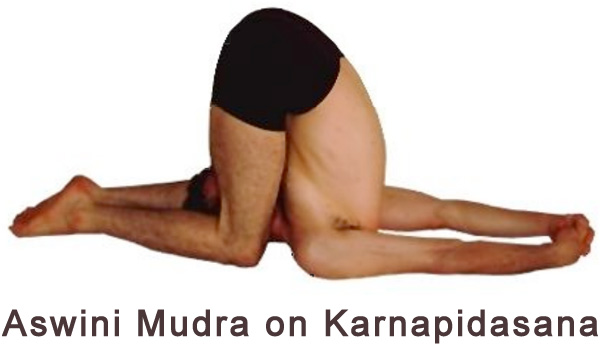
The above routine can be practiced 3 mins in the morning, 3 mins in the evening and 1 min before sleep on an empty stomach.
Asana
The asanas offered by Kaya Kalpa Yoga are too mild and basic. I would suggest any regular one hour yoga class.
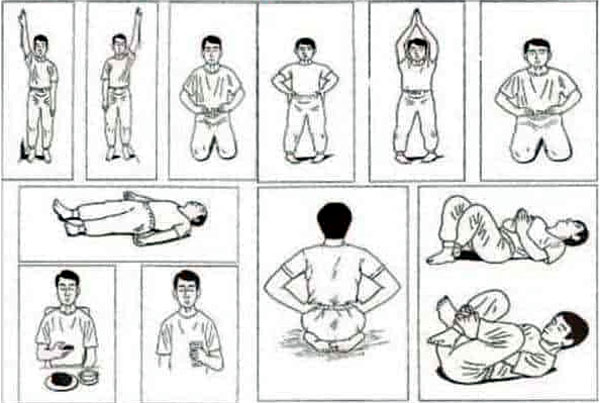
Meditation
Suggested meditation practice is on Sambhavi Mudra (awareness on the 3rd Eye) and Muladhara Chakra meditation (LAM seed mantra chanting, Prithvi hand mudra)
Ending Thoughts
The hardcore version of Kaya Kalpa, Kuti Praveshika, is beyond my reach, and I will probably be wary of ingesting mercury or arsenic to begin with. The Vita Tapika is still available in plush resorts together with its pre-requisite, the Pancha Karma. I remember meeting a lot of travelers in India who went through Pancha Karma and they simply raved about it. But there is none of that in the Philippines and it's expensive even in India . So either pathway is not accessible to me.
But I have an idea and it just might work. I'm currently reading the Holographic Universe, and contained in it is using vivid imagery to manifest a real physiological change in the human body, not unlike a multiple (someone who has multiple personalities) who can change his voice print, brain wave and even allergies when shifting personalities. The changes brought about were astounding. Another imagery tool I can use is what I had been using the past 3 weeks as I read another book, Kundalini Yoga. Chakra meditation is pure imagery of visualing Kundalini awakening chakra by chakra until it reaches the Sahasrara. I have become proficient in doing such envisioning.
Another tool in the Holographic Universe model is core belief. A cancer patient cured himself of cancer when he believed he was given such a breakthrough drug, even though it was placebo. When he realized that, his cancer returned and killed him - it was his belief that cured him and it was that same belief that returned the cancer and killed him.
Do I have to fool myself into believing something I know I was imagining? NO. I don't have to fool myself. I have to come clean with my truth and open up to the source that made these transformations happen - my universe, the Implicate Order, God, the cosmic order, the Field, etc. It comes in many names and I choose the name that resonates most with me - my benevolent universe. I'll make a separate blog about the result if successful (if I revert back to my youthful 35 year old look).
--- Gigit (TheLoneRider)
YOGA by Gigit ![]() |
Learn English
|
Learn English ![]() |
Travel like a Nomad
|
Travel like a Nomad ![]() |
Donation Bank
|
Donation Bank ![]()
Kaya Kalpa (video)
Kaya Kalpa (pdf  )
)
- Kaya Kalpa and the Alchemical Tradition in Ayurveda and Siddha Medicine - by Ione Linker (March 2009)
- Kaya Kalpa Yoga
Leave a comment?
Next story:

![]()
![]()
»» back to Yoga
»» back to Homepage
ARCHIVE 2025:
JAN |
FEB |
MAR
1970 |
1973 |
1975 |
1976 |
1977 |
1979 |
1981 |
1996 |
2000 |
2001 |
2002 |
2003 |
2004 |
2005 |
2006 |
2007 |
2008 |
2009 |
2010 |
2011 |
2012 |
2013 |
2014 |
2015 |
2016 |
2017 |
2018 |
2019 |
2020 |
2021 |
2022 |
2023 |
2024 |
2025 |
ALL BLOGS

